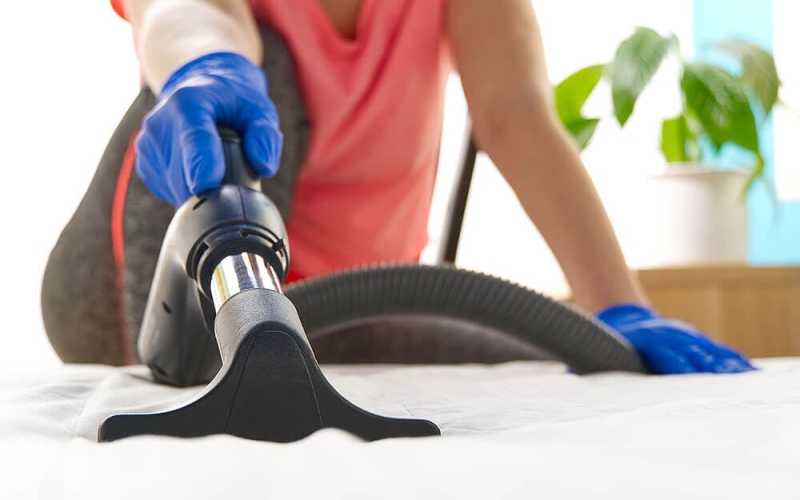Cleaning tasks come in all shapes and sizes, but some jobs require more than just a mop and bucket. Heavy-duty cleaning, whether in industrial settings, construction sites, or even particularly challenging home environments, demands advanced solutions that can tackle the toughest grime and build-up. Here, we explore some of the most effective advanced cleaning solutions available, perfect for those times when regular cleaning methods just won’t cut it.
Understanding Heavy-Duty Cleaning
Heavy-duty cleaning involves removing stubborn contaminants, such as grease, oil, dirt, paint, and rust from surfaces. These contaminants often resist traditional cleaning methods and require specialized equipment and techniques to be effectively eliminated. One example of such a specialized technique is the use of a blast chamber, which is designed to clean items using high-pressure streams of abrasive materials.
High-Pressure Washing
High-pressure washing, also known as power washing, uses high-pressure water sprays to remove dirt, grime, mold, and other contaminants from surfaces. This method is especially effective for outdoor surfaces like driveways, patios, and siding.
Benefits of High-Pressure Washing
- Efficiency: High-pressure washing can clean large areas quickly and effectively, reducing the time and labor required.
- Versatility: Suitable for a wide range of surfaces, from concrete to wood, making it a versatile solution for many cleaning needs.
- Environmental Friendliness: When using water alone, this method is eco-friendly and avoids the need for harsh chemicals.
Popular Equipment
- Electric Pressure Washers: Ideal for smaller jobs and residential use.
- Gas-Powered Pressure Washers: More powerful and suitable for larger, more demanding tasks.
Ultrasonic Cleaning
Ultrasonic cleaning uses high-frequency sound waves to create microscopic bubbles in a cleaning solution. These bubbles implode on contact with surfaces, effectively removing dirt, grease, and contaminants. This method is particularly useful for intricate or delicate items.
Applications of Ultrasonic Cleaning
- Medical Equipment: Ensures that medical instruments are thoroughly cleaned and sanitized.
- Jewelry: Cleans delicate jewelry without damaging them.
- Automotive Parts: Removes grease and grime from engine components and other intricate parts.
Advantages
- Thorough Cleaning: Reaches into small crevices and complex geometries that other cleaning methods might miss.
- Non-Abrasive: Safe for delicate items and prevents damage.
Dry Ice Blasting
Dry ice blasting involves propelling dry ice pellets at high speeds to clean surfaces. The dry ice sublimates upon impact, leaving no residue behind. This method is ideal for situations where water or chemical residues are undesirable.
Key Benefits
- No Residue: Leaves no secondary waste, making it perfect for sensitive environments like food processing facilities.
- Non-Abrasive: Safe for delicate surfaces and equipment.
- Eco-Friendly: Uses CO2, which sublimates into the atmosphere, reducing environmental impact.
Common Uses
- Industrial Equipment: Cleans machinery and equipment without disassembly.
- Historic Restoration: Removes contaminants from delicate historical artifacts without damage.
- Mold Remediation: Effectively removes mold and mildew from various surfaces.
Steam Cleaning
Steam cleaning uses high-temperature steam to sanitize and clean surfaces. This method is highly effective for removing grease, grime, and bacteria without the need for chemicals.
Advantages of Steam Cleaning
- Sanitization: Kills bacteria, mold, and dust mites, making it ideal for sanitizing surfaces.
- Chemical-Free: Uses only water, making it safe and environmentally friendly.
- Effective on Various Surfaces: Suitable for use on hard surfaces, upholstery, and carpets.
Popular Steam Cleaning Tools
- Steam Mops: Perfect for cleaning floors and large surfaces.
- Handheld Steam Cleaners: Ideal for small or hard-to-reach areas.
Abrasive Blasting
Abrasive blasting, also known as sandblasting, involves propelling abrasive materials at high speed to clean or prepare surfaces. This method is highly effective for removing rust, paint, and other stubborn contaminants.
Types of Abrasive Materials
- Sand: Traditional abrasive material, effective but can be hazardous.
- Glass Beads: Provides a smoother finish and is less damaging to surfaces.
- Baking Soda: A gentler option, suitable for more delicate surfaces.
Applications
- Metal Surfaces: Removes rust and old paint, preparing surfaces for painting or coating.
- Concrete: Cleans and restores concrete surfaces, removing old paint and stains.
- Wood: Strips old paint and finishes, preparing wood for refinishing.
Chemical Cleaning
Chemical cleaning involves using specially formulated solutions to dissolve and remove contaminants. This method is effective for a variety of stubborn stains and build-ups.
Types of Chemical Cleaners
- Solvent Cleaners: Dissolve grease and oil, making them ideal for automotive and industrial applications.
- Acidic Cleaners: Effective for removing mineral deposits and rust.
- Alkaline Cleaners: Suitable for cutting through grease and organic build-up.
Safety Considerations
- Protective Gear: Always use appropriate protective gear, such as gloves and goggles, when handling chemical cleaners.
- Ventilation: Ensure adequate ventilation to avoid inhaling harmful fumes.
- Proper Disposal: Dispose of chemical cleaners according to local regulations to prevent environmental harm.
Robotic Cleaning Systems
Robotic cleaning systems are increasingly used for heavy-duty cleaning tasks, particularly in industrial and commercial settings. These systems can operate autonomously, reducing labor costs and improving efficiency.
Benefits of Robotic Cleaning
- Consistency: Provides consistent cleaning results without human error.
- Safety: Reduces the risk of injury by performing dangerous tasks.
- Efficiency: Can operate continuously, improving productivity.
Applications
- Industrial Tanks: Cleans large tanks and vessels without requiring manual labor.
- Solar Panels: Maintains solar panel efficiency by regularly removing dust and debris.
- Commercial Floors: Keeps large commercial spaces clean with minimal human intervention.
Choosing the Right Method for Your Needs
When it comes to heavy-duty cleaning, one size does not fit all. The right method depends on the type of contaminants, the surface being cleaned, and the desired outcome. Whether it’s the precision of ultrasonic cleaning, the power of abrasive blasting, or the eco-friendliness of steam cleaning, advanced cleaning solutions offer the versatility and effectiveness needed to tackle the toughest jobs. Remember to consider the specific requirements of your cleaning task and choose the method that provides the best balance of efficiency, safety, and environmental impact. With the right approach, you can achieve outstanding results and maintain a clean, safe, and productive environment.


